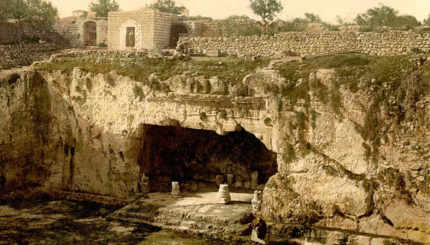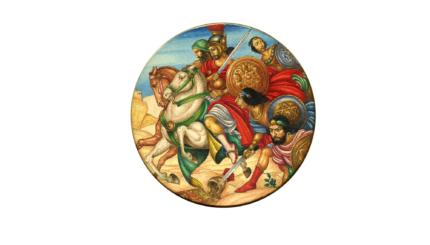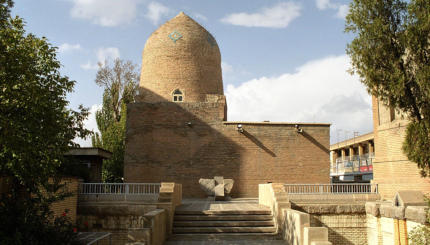Reprinted with permission from The JPS Guide to Jewish Women (Jewish Publication Society).
Gracia Nasi, known at first as Beatrice de Luna, was born in Portugal in 1510 into a family of New Christians or conversos, the result of the mass conversion of Portuguese Jews in 1497. However, as so many others had done, her family secretly retained their ties to Judaism and gave her the Hebrew name Hannah. Beatrice married another converso, Francisco Mendes, a wealthy trader in gems and spices.
The Formation of a Family
Beatrice/Hannah de Luna Mendes and her husband, Francisco, had one child, a daughter named Reyna. In 1536, when Reyna was five years old, Francisco died, and Beatrice, now a 26-year-old widow, was heir to one half of his enormous fortune. That same year, the Inquisition was re-established in Portugal and all conversos were threatened, but Beatrice de Luna, who up until that time had escaped suspicion, was allowed to leave Lisbon. Together with her daughter, Reyna, and her sister Brianda, she fled to Antwerp, the capital of Flanders. Two years later, Joao Migues, Beatrice’s nephew (later renowned as Joseph Nasi), joined them.
Diogo Mendes, Francisco’s brother and business partner, already lived in Antwerp, and after the arrival of the two women, he married Beatrice’s sister Brianda. Diogo had inherited the other half of Francisco’s fortune and had already extended the family business to include not only trading in spices and precious stones, but also banking. Banking as it was practiced in the 16th century involved the transmission of money from country to country and the arrangement of bills of exchange. Once Beatrice de Luna Mendes and her family were safely settled in Antwerp, they became skilled in these procedures and Beatrice created a secret network, enabling Jewish conversosto leave Portugal, transferring their money through bills of exchange so they could make new lives elsewhere.”

Help us keep Jewish knowledge accessible to millions of people around the world.
Your donation to My Jewish Learning fuels endless journeys of Jewish discovery. With your help, My Jewish Learning can continue to provide nonstop opportunities for learning, connection and growth.
Tragedy Brings New Fortune
Prosperous and respected, the Mendes family established themselves in luxurious fashion, but as long as Flanders remained part of the Spanish Empire and the Inquisition remained active, they were still not able to live without fear of discovery. The decision was made to transfer the Mendes assets to a more tolerant country, where they could live openly and practice Judaism. But before these plans could be carried out, Diogo died. Now Beatrice not only retained her half of the capital in the Mendes business, but she was also appointed administrator for the other half, which she was to manage for his widow (her sister Brianda) and their infant daughter. This assignment caused a bitter fight between Beatrice and Brianda that had ramifications for many years afterward.
Beatrice de Luna Mendes now controlled one of the largest fortunes in Europe, and through her business acumen she forged connections to rulers throughout the Western world. Despite her growing power, however, she could not protect the family from all outside dangers, and soon a new threat presented itself. In 1536, a Catholic nobleman, Don Francisco d’Aragon, sought Reyna’s hand in marriage. Beatrice Mendes took immediate action. With no warning, she, her daughter, Reyna, and her sister Brianda with her young daughter (also named Beatrice) left the Mendes mansion. Packing only their jewels and as many personal possessions as possible, they fled to Italy and before long appeared in Venice. Forty boxes filled with valuables were left behind in Antwerp.
Still regarded as New Christians, the Mendes family was not required to live in the Venetian ghetto. Although Beatrice continued supervising her business and lived in luxury, those years (1545-1549) were not peaceful ones. Beatrice’s sister Brianda, the widow of Diogo Mendes, challenged her for control of the family fortune, and as long as the matter remained undecided, neither of them was permitted to leave Venice
Physical and Spiritual Aid
When the case was finally settled in 1549, Beatrice Mendes went to the court of Ercole II d’Este in Ferrara. The Duchy of Ferrara, already the home of BenvenidaAbrabanel and her family, was more hospitable to Jews, and it was here that Beatrice began using her Hebrew name, Hannah, or Gracia, and took on the family name of Nasi, the Hebrew word for prince. Other Portuguese Jews simply called her Signora or La Dona. From Ferrara, Dona Gracia continued to help crypto-Jews leave Portugal.
In addition, she contributed to the printing of Hebrew books in Spanish translations for the benefit of the conversos. In 1553 the Hebrew Bible was translated into Spanish and published in two editions, one for Christians and one for Jews. It became known as “The Ferrara Bible” and was dedicated to the noble-hearted Dona Gracia Naci, the Very Magnificent Lady. Samuel Usque’s Consolation for the Tribulations of Israel, a prose-poem in Portuguese, was also dedicated to Gracia, whom Usque called “the heart of her people.”
In 1554, Gracia and her daughter returned to Venice and began to make plans to relocate to Istanbul. Joao now called Don Joseph Nasi, again followed Gracia. He arrived in Istanbul with his own retinue of bodyguards and servants, had himself circumcised in 1554, and returned to Judaism. He subsequently married Gracia’s daughter, Reyna Nasi.
Forging a Community
In Turkey, Dona Gracia became the leading force in the Jewish community. She lavishly supported synagogues, schools, and hospitals all over the Ottoman Empire and carried on extensive trade in spices, grain, and wool with Italian cities, utilizing her own ships. When she pulled her fleet out of Ancona during the Jewish boycott of that city, there were international repercussions. Finally secure in Turkey, with close ties to the sultan’s court, Dona Gracia sought to acquire some place of safety for other Jews. With that goal in mind, she leased land in Tiberius, a town in Palestine, then under Ottoman control.
Her hope was to encourage a self sufficient Jewish community there. For a short time, Jewish settlement in the Galilee was increased and Tiberius became a successful city. Although a mansion was prepared there for La Signora herself, she died before she could occupy it. This settlement, one of the earliest to attract Jews to return to Zion, has usually been credited to Gracia’s nephew, Don Joseph Nasi, conceding only that she was at his right hand, serving as his inspiration. However, the idea was first envisioned by Gracia, who, taking advantage of her influence at court, conceived of the plan, leased the land for a high yearly rental that she paid herself, and briefly turned Tiberius into a thriving Jewish city.
After she died, Joseph never visited the town and it deteriorated. Finally, the lease was allowed to lapse. The exact date of Gracia Nasi’s death is not known, but it probably occurred in the summer of 1569 when she was 59 or 60 years old. By that time, she had achieved power, fame, and riches beyond most people’s imagination.


